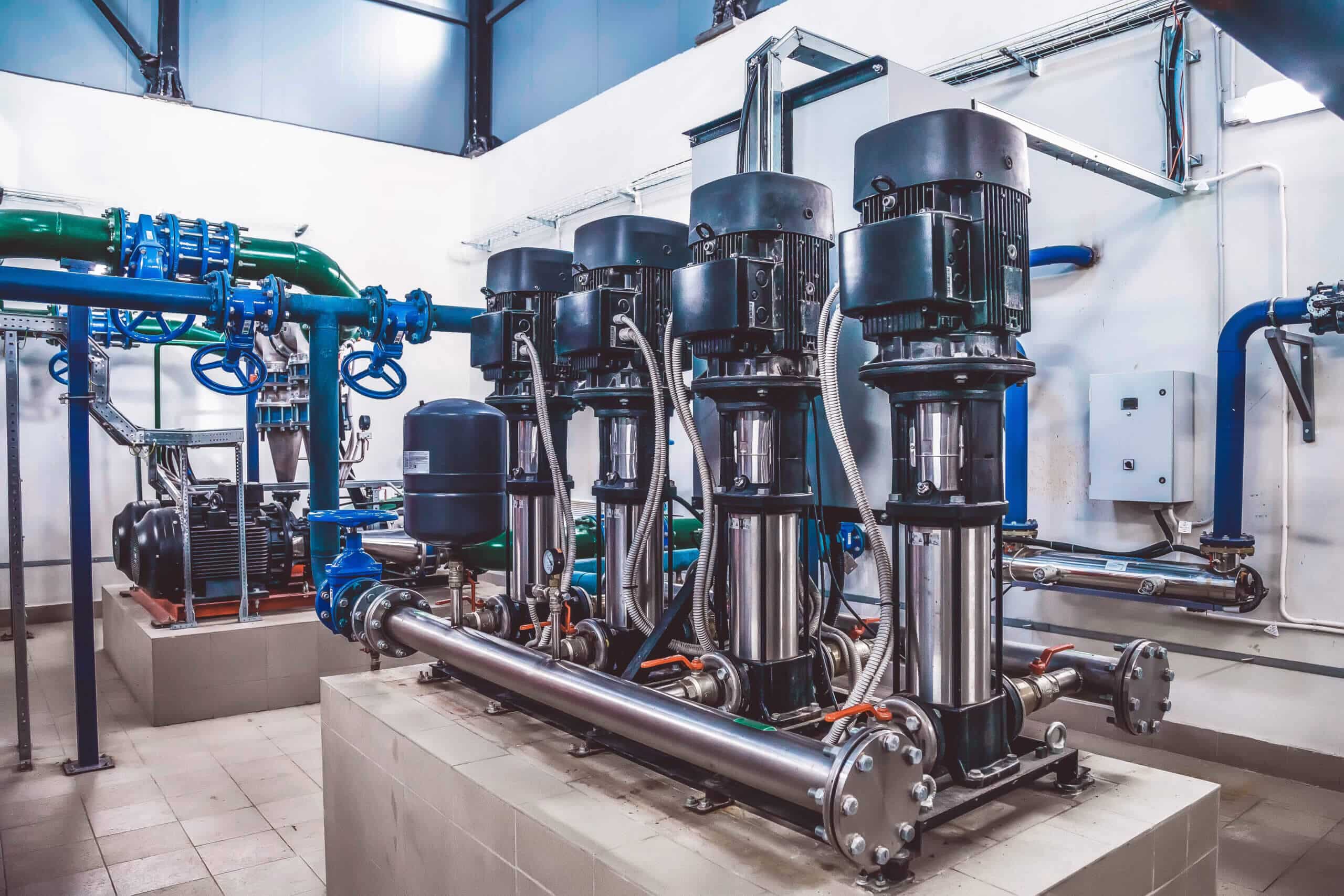Large volumes of chilled water are required at I-P Androscoggin mill. Chill-Vactor unit employs steam jet vacuum for refrigeration.
The chlorine dioxide bleaching process at International Paper Co.’s huge Androscoggin mill at Jay, Maine, requires a steady flow of 40°F water to insure proper mixing of bleach chemicals for daily processing of 500 tons of kraft pulp.
During the winter months, input water from the Androscoggin river hovers near the 40° mark, but during the summer, input water with temperatures ranging from 41° to over 70°F must be chilled.
To meet this large-volume need for chilled water, I-P recently installed a 3-stage steam jet vacuum refrigeration system capable of providing continuous chilling to 40° at a rate of 200 gals/min.
In operation around the clock during warmer seasons, the 375-ton jet vacuum system chills 288,000 gals/day of water for circulation through bleach plant heat exchange equipment, and for absorption of CIO squared,, which becomes the bleaching agent for the facility’s 500-ton/day output of kraft pulp.
Simple Design Is Feature Of Unit
Major factors in selecting the jet vacuum system were simplicity. of design, high reliability, and low maintenance compared to other refrigeration systems. Previous experience with a lithium bromide absorption system at Androscoggin resulted in high maintenance costs, both for periodic cleaning of refrigeration tubing and for repair and replacement of parts.
Unlike conventional refrigeration systems which utilize chemical refrigerants such as freon and lithium bromide, the jet vacuum system (which requires no moving parts) provides continuous refrigeration without the need for mechanical compressors, refrigeration tubing, or mechanical equipment normally required where chilling is accomplished by heat transfer between the water and chemically cooled metal surfaces.
A steam jet refrigeration unit makes use of a low absolute pressure (high vacuum) which causes water entering the vacuum chamber to boil until its vapor pressure is in equilibrium with the vacuum. Since the heat required for vaporization must come from the water itself, refrigeration is accomplished.
Cooling Capacity Is 200 Gals/Min
Designed and constructed by Croll Reynolds Co., the 375 ton Chill-Vactor has the capacity to cool 200 gals/min of water from 80° to 40°F. Cooling is accomplished in three stages, each stage being served by an individual “booster.” Cooling in stages requires less steam than if all the cooling were at the final temperature, since those stages operating at- higher temperature and therefore, higher pressures require less compression by the “boosters.”
The three boosters discharge into a barometric condenser where the steam and vapor loads are condensed and are discharged along with the condenser water through a 36 ft barometric “leg” to a hotwell at ground level. A Croll Reynolds Evactor air pump maintains the correct condenser pressure by eliminating air and other condensible gases from the system. Water is supplied to the barometric condenser from the facility’s filter plant.
Automatic deaerating in the barometric condenser and Chill-Tank removes carbon dioxide from the water and increases its alkalinity, minimizing the corrosive effects of the water on piping and related equipment. Because the chill tank requires no refrigeration tubing, and because the heat exchange occurs on the surface of the water in the chill tank rather than between the water and metal surfaces, mineral deposits are greatly reduced compared to other types of refrigeration systems. Furthermore, chilling process efficiency is not dependent on periodic cleaning of mineral deposits. The unit will continue to operate at optimum efficiency even when deposits on the inside of the tank are an inch thick.
Jay Mill Is Big, Versatile
Built at a cost of more than $100 million, the Androscoggin mill is I-P’s newest fully operating facility equipped for production of both groundwood and quality kraft papers. The mill’s 300 ton/day groundwood plant and 500 tons/day 210 ft high digester produce pulp for 41 varieties of register bond, carbonizing tissues, and double-coated publication grade papers made at the new facility. The 200-acre facility has three of the largest machines in the world for producing these particular papers. Completed in 1967, the mill uses 1,150 cords/day of pulpwood.


